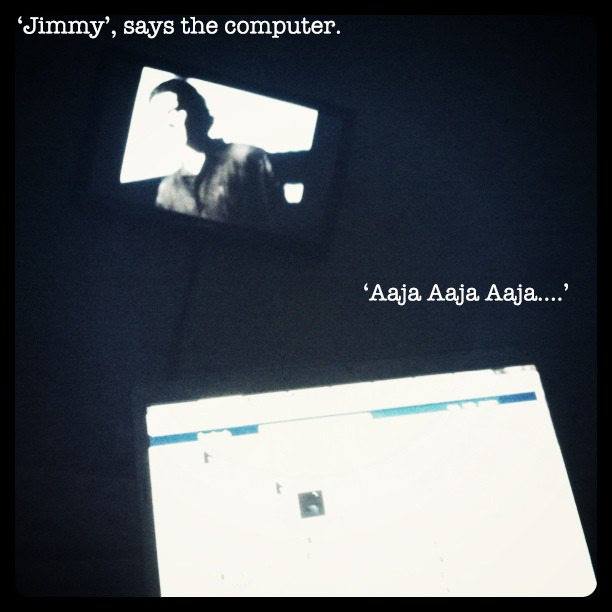Social Media
-
Khabar Lahariya: Rural Empowerment Goes Digital
In this post, Mrinalika Roy, one of the researchers who received the Social Media Research grant for 2015, introduces her proposed work. When a New Delhi-based NGO ‘Nirantar’ began India’s first-of-its’s-kind, rural newspaper ‘Khabar Lahariya’ in May 2002 from Bundelkhand district – a semi-arid region where 60% of the population depends on agriculture for sustenance — their aim was to bring rural women into the sphere of journalism, information and technology.
-
Imago Aevitas – Brief Introduction to the Genesis of the Project
In this post, Charu Maithani, one of the researchers who received the Social Media Research grant for 2015, introduces her proposed work. My research project combines two ideas that have captivated me for a long time – the image – its various forms and properties in a medium, and the viewers’ interaction with the image…
-
Video Forensics: Post 1
In this post, Pallavi Paul, one of the researchers who received the Social Media Research grant for 2015, introduces her proposed work. The conception of the ‘human trace’ has acquired several dimensions in the digital moment. We find ourselves surrounded not only by many kinds of images of the body but also new kinds of…
-
Lovely* Interfaces: The Many Lives of the Item Number in Social and Digital Media
In this post, Silpa Mukherjee, one of the researchers who received the Social Media Research grant for 2015, introduces her proposed work.
The item number [2] in Bombay cinema is an ensemble form navigating between the circuits of B cinema and the allure of the mainstream. As a dance form and practice, the item number has been shaped by a wide range of intersecting influences: 1990s B cinema, the fashion and modelling industry, music video culture and the 24*7 music television format introduced in globalised India. I propose to trace the life of the item number through social and digital media and the affective landscape transmitted through multiple interfaces.
-
Law’s Role in Development of the Internet
In this post, Smarika Kumar, one of the researchers who received the Social Media Research grant for 2015, introduces her proposed work. As the internet begins to pervade our lives in increasing ways, the clamour to regulate it has heightened. Be it viral posts on social media urging violence, the easy availability of sexual content…
-
Afterlife of the Nineties Romantic Film Song in the Virtual Public Sphere
In this post, Abhija Ghosh, one of the researchers who received the Social Media Research grant for 2015, introduces her proposed work.
In this project, I am interested in observing the popularity of nineties romantic cinema and music across several internet media streams such as video sharing platforms, online radio music channels, nineties fan sites and lists in order to map the registers of popular memory, affect and pleasure that mark an emerging cultural afterlife of this decade of Hindi cinema. Social media fan pages like All About 90s evoke cultural associations with the decade by regularly alluding to nineties media forms such as cassettes, video tapes and their object lives, or television broadcasts and their aesthetic convention, however it is the nineties romantic film song that seems to occupy a special space of nostalgia in the collective memory of such internet communities.
-
Short Term Research Projects in Social Media: Selected Proposals 2015
The Sarai Programme is committed to developing a public architecture for creating knowledge and creative communities. In keeping with this commitment, we seek to develop a community of scholars, writers and practitioners who are motivated to make the materials and outcome of research available for public access and circulation, with the understanding that an imaginative engagement with social experience will be best fostered by a sharing of information, ideas, research materials and resources. We see our system of Short Term Research Projects as a resource that will be built on by many people working whether individually or in groups, but with a sense of collective endeavour and public purpose.
-
Call for Proposals: Short Term Research Projects in Social and Digital Media
The Sarai Programme, Centre for the Study of Developing Societies, Delhi, invites proposals from individuals for research projects on contemporary social and digital media, its ecologies and histories. Selected research proposals will be supported with a short-term grant for six months, and the researchers will present their studies in a workshop at Sarai-CSDS at the…
-
Cell Phone Videos, Mobilizing Shame and the Image collisions
More cell phone videos have been shot, edited and uploaded online in the last 16 hours then the total number of films and TV shows produced in India in the year 1989. Cell phone videos in particular have had definitive impact in shaping much of recent history. From the ‘Arab Spring’, to Abu Ghraib to the Kajieme Powell killing to innumerable videos capturing mundane violence or corruption worldwide, cell phone videos are the dominant visible template of the real today… In this post I look at some recent ‘citizen videos’ and try and nudge towards changing relationship between the (sting) video document and issues of ‘truth’, ‘shame’ and transparency.
-
Deconstructing Black-Boxes: Notes from the Field
This post contains a detailed summary of the secondary research component and an early stage analysis of the three interviews that were completed as a part of the primary research component of this project. Two of these Interviews were conducted with data scientists working with large scale public data. The third Interview was with an Image processing expert now active in the field of data sciences… The Interface as discussed collects the user data actively (through forms/text boxes, affordances) and passively (tags tracing user footprint on the site)… Data is far from being structured; it contains a lot of noise. It gets generated in high volumes and does not leant itself easily to analysis.






